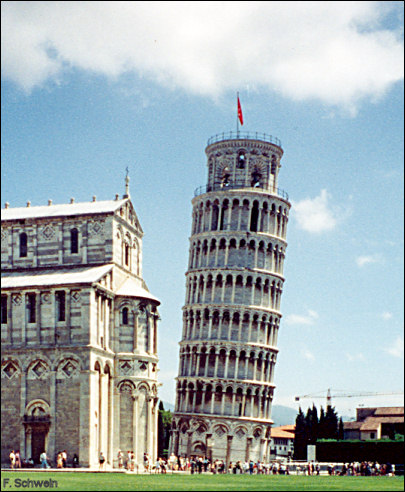

At least in myth, Galileo dropped objects of two different weights from the leaning tower of Pisa. This experiment purportedly proved that all objects, regardless of weight, fall at the same rate. What we tend to forget, however, is that under everyday conditions here on earth, it's not true. One of our desert falcons, folding its wings to plummet toward earth and dinner, is going to rise with its prey long before any feather coming loose at the start of its plunge comes close to landing.
In fact, a bird in full dive from a high elevation will eventually stop
accelerating. So what's going on? Galileo's rule only works in a vacuum. On
earth, a heavy, small object easily bulls its way though a storm of air molecules, each
molecule of minuscule weight compared to the object. A lightweight feather, with its
large surface area, is encountering many more molecules per ounce. And our bird? The
faster it falls, the more air molecules per second encountered, until the resisting
force of the air equals the weight of the bird.

Contributor: Arthur H. Harris, Laboratory for Environmental Biology, Centennial Museum, University of Texas at El Paso.
Desert Diary is a joint production of the Centennial Museum and KTEP National Public Radio at the University of Texas at El Paso.

The Leaning Tower of Pisa. Photograph by F. Schwein.